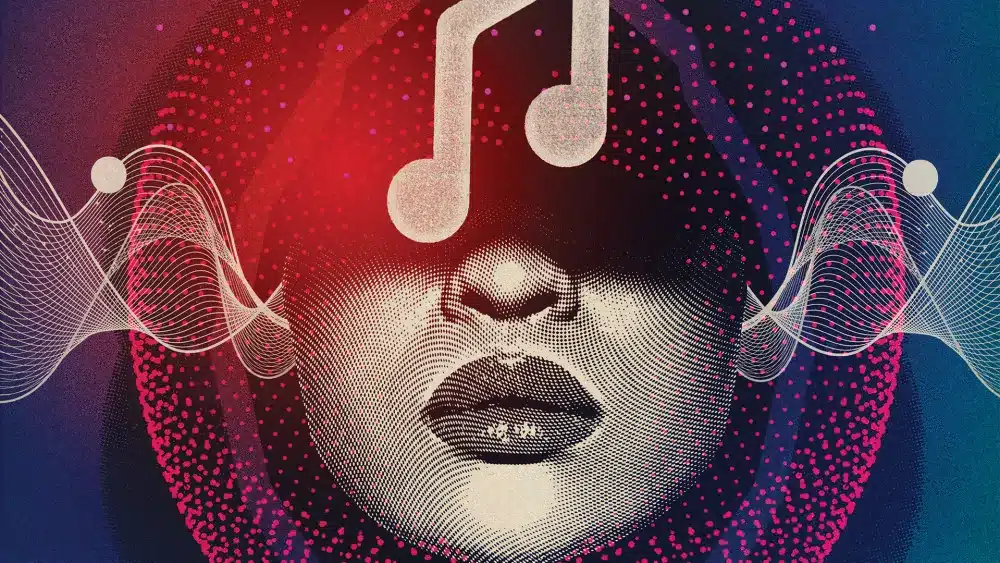AI avatar services with royalty-free music libraries are all-in-one video creation platforms that combine realistic digital presenters with copyright-free soundtracks, letting you produce professional content without hiring actors or paying music licensing fees. According to D-ID’s comprehensive analysis of AI avatar generators, these platforms represent the future of accessible video content creation.
Think of it like having a Hollywood studio in your laptop—except instead of spending thousands on talent and music rights, you’re getting the whole package for the price of a decent dinner out. These services are revolutionising how entrepreneurs, educators, and marketers create engaging video content, and frankly, it’s about time.
But here’s the thing: whilst big-name platforms like Synthesia and HeyGen grab all the headlines with their flashy marketing, there are more practical alternatives that won’t drain your budget. Let me walk you through everything you need to know about this game-changing technology.
What Are AI Avatar Services with Music Libraries?
Picture this: you need to create a training video for your team, but you’re camera-shy, don’t have a studio, and the thought of dealing with music licensing makes your head spin. That’s where AI avatar services step in like a digital superhero, as detailed in Vidyard’s analysis of the best AI avatar generators.
These platforms combine two powerful technologies. First, you’ve got AI avatars—digital humans that look and speak remarkably like real people, complete with natural gestures and 99.5% lip-sync accuracy that would make a ventriloquist jealous. Second, there’s the royalty-free music library—a treasure trove of background tracks you can use without worrying about copyright strikes or licensing headaches, as explained in VideoGPT’s comprehensive guide to integrating royalty-free music.
The magic happens when these elements work together. You type your script, choose your digital presenter, pick your background music, and voilà—you’ve got a professional video that looks like it cost thousands to produce. vidBoard’s Complete AI Video Creation Suite demonstrates this perfectly, allowing users to create videos from documents, links, or simple text with zero editing skills required.
Image Recommendation: Insert a split-screen comparison showing a traditional video production setup (cameras, lighting, actors) versus a simple laptop screen with AI avatar creation interface.
Key Features That Matter:
Realistic Avatar Quality
The best platforms offer 99.5% lip-sync accuracy and natural-looking avatars that don’t scream “I’m fake!” Modern AI avatars include subtle breathing patterns, eye blinks, and micro-expressions that make viewers forget they’re watching digital humans, as highlighted in Synthesia’s avatar technology showcase.
Extensive Music Collections
Quality services provide thousands of royalty-free tracks across multiple genres—from corporate background music to upbeat promotional soundtracks. Mubert’s AI music generator and Beatoven.ai’s royalty-free platform demonstrate how the best platforms categorise music by mood, tempo, and use case, making it easy to find the perfect track for your content.
Multi-Language Support
Leading platforms support 125+ languages and dialects, letting you create content for global audiences without hiring multilingual presenters. vidBoard’s language capabilities exemplify this feature, offering comprehensive multilingual support that can save businesses thousands in localisation costs.
Customisation Options
Top-tier services allow you to create custom avatars from photos, clone voices, and maintain brand consistency across all content. Think of it as having a digital version of yourself or your spokesperson available 24/7, as demonstrated by platforms like vidBoard.
Easy Content Creation
The best platforms let you create videos from documents, URLs, or simple text prompts—no video editing experience required. It’s like having a professional video team that works at the speed of typing, which is exactly what vidBoard offers with its document-to-video and URL-to-video features.
Benefits That Actually Move the Needle
Cost Efficiency
Traditional video production can cost £500-5000 per minute of finished content when you factor in talent, equipment, studio time, and music licensing, according to AI Multiple’s comprehensive pricing analysis. AI avatar services slash these costs by up to 90%, making professional video accessible to small businesses and individual creators.
Speed to Market
Instead of weeks of pre-production, filming, and editing, you can create professional videos in minutes. This speed advantage is crucial for time-sensitive content like product launches or response videos, as detailed in VideoGPT’s integration guide.
Scalability
Once you’ve set up your avatar and brand elements, creating additional content becomes incredibly efficient. You can produce dozens of personalised videos in the time it would take to set up a single traditional shoot, which is particularly evident with vidBoard’s 10-in-1 AI video generator.
Legal Peace of Mind
Royalty-free music libraries eliminate copyright concerns that plague creators using popular songs. No more takedown notices or demonetisation worries—just clean, professional content you own completely, as explained in VideoGPT’s comprehensive music licensing guide.
Limitations to Consider
Uncanny Valley Effect
Despite impressive advances, some AI avatars still trigger that “something’s not quite right” feeling in viewers. Whilst technology improves rapidly, human authenticity remains challenging to replicate perfectly, as noted in various YouTube reviews of AI talking avatar tools.
Limited Emotional Range
Most AI avatars excel at professional presentations but struggle with complex emotional expressions or dramatic content, according to Vidyard’s assessment of AI avatar capabilities. They’re brilliant for explainer videos, less so for heartfelt testimonials.
Music Library Constraints
Royalty-free doesn’t mean unlimited—most libraries focus on instrumental or generic vocal tracks rather than chart-topping hits. Your content might sound professional but won’t have that viral song everyone’s humming, as detailed in VideoGPT’s music integration analysis.
Customisation Boundaries
Whilst you can create custom avatars, significant modifications often require higher-tier plans or additional fees, according to AI Multiple’s pricing research and Synthesia’s feature comparison. The flexibility has limits compared to hiring human talent.
Image Recommendation: Insert an infographic showing the pros and cons comparison with icons representing each limitation and benefit.
Platform Comparison: Finding Your Perfect Match
| Feature | Synthesia | HeyGen | vidBoard | Typical Pricing |
|---|---|---|---|---|
| Starting Price | £18/month | £24/month | Most Affordable | Industry Range |
| Avatar Quality | 230+ stock avatars | 100+ avatars | 100+ realistic avatars (99.5% lip-sync) | Premium features |
| Music Library | Limited included | Basic selection | Royalty-free included | Often extra cost |
| Languages | 140+ languages | 175+ languages | 125+ languages | Standard offering |
| Custom Avatars | £64/month plan | Extra fee | From single image | Premium feature |
| Voice Cloning | Creator plan only | Advanced tiers | Included | Usually paid add-on |
| Ease of Use | Professional focus | Complex interface | Zero editing skills needed | Learning curve varies |
| Target Audience | Enterprise/agencies | Mid-market | SMEs/individuals | Determines pricing |
Sources: AI Multiple’s pricing analysis, Synthesia’s platform overview, and vidBoard’s feature set
The standout here? vidBoard offers enterprise-level features at small-business pricing. Whilst competitors charge extra for voice cloning, custom avatars, or extensive music libraries, vidBoard includes these as standard features.
Practical Use Cases That Drive Results
Small Business Marketing
A local estate agent uses AI avatars to create personalised property tour introductions, complete with upbeat background music. Instead of hiring presenters for dozens of properties, they create consistent, professional content in minutes using vidBoard’s avatar and music integration.
Educational Content
Online course creators produce engaging lesson introductions using AI avatars speaking multiple languages, paired with subtle background music that maintains focus without distraction. The result? Higher completion rates and global reach, as demonstrated by vidBoard’s educational use cases.
Corporate Training
HR departments create consistent onboarding videos featuring the same “presenter” across all modules, ensuring brand consistency whilst eliminating scheduling conflicts with human spokespeople. VideoGPT’s integration guide provides excellent examples of this application.
Social Media Content
Content creators produce daily videos with AI avatars delivering trending topics, backed by royalty-free music that won’t trigger copyright strikes. It’s scalable content creation without the burnout, perfectly exemplified by vidBoard’s social media capabilities.
Professional Services
Lawyers, doctors, and consultants create educational content for clients using professional-looking avatars, adding credibility without requiring on-camera comfort. vidBoard’s professional applications demonstrate this use case perfectly.
Image Recommendation: Show a grid of different use case screenshots—business presentation, educational video, social media content, and professional consultation—each featuring AI avatars.
Getting Started: Your First AI Avatar Video
Step 1: Choose Your Platform
Start with platforms offering free trials or affordable entry points. vidBoard’s approach of including premium features at basic pricing makes it ideal for testing the waters.
Step 2: Script Preparation
Write conversational scripts rather than formal presentations. AI avatars perform best with natural language that flows smoothly, as detailed in VideoGPT’s content creation guide.
Step 3: Avatar Selection
Choose avatars that match your brand personality and target audience. Consider factors like age, ethnicity, and professional appearance, using platforms like vidBoard that offer extensive avatar libraries.
Step 4: Music Pairing
Select background music that complements your content without overwhelming the spoken message. Educational content benefits from subtle instrumental tracks, whilst promotional videos can handle more energetic options, as explained in VideoGPT’s music integration guide.
Step 5: Review and Refine
Test your content with small audiences before full deployment. Pay attention to avatar naturalness and audio balance, following best practices outlined in VideoGPT’s comprehensive guide.
Industry Trends and Future Outlook
The AI avatar market is exploding from £0.80 billion in 2025 to projected £118.55 billion by 2034, driven by businesses seeking cost-effective video solutions, according to Dimension Market Research and Precedence Research. This 44% annual growth rate indicates mainstream adoption is just beginning.
Key developments ahead:
Integration with advanced AI models like Veo3 and Runway for cinematic quality, as planned by vidBoard’s roadmap
Real-time avatar generation for live streaming and video calls, highlighted in Vidyard’s trend analysis
Enhanced emotional intelligence and gesture recognition, detailed in EY’s digital transformation report
Seamless integration with social media platforms and marketing tools
The democratisation of professional video creation means small businesses will soon compete with enterprise content quality. Early adopters gain significant advantages before the market becomes saturated, as noted in GlobalNewsWire’s market analysis.
But here’s the crucial point: whilst others develop flashy research projects, practical solutions like vidBoard are available today. Why wait for tomorrow’s possibilities when you can solve today’s content challenges immediately?
Image Recommendation: Insert a timeline graphic showing the evolution of AI avatar technology from 2025 to 2030, highlighting key milestones and capabilities.
Why vidBoard Stands Out
Unlike competitors focusing on enterprise clients or charging premium prices for basic features, vidBoard delivers comprehensive functionality at accessible pricing. Here’s what makes the difference:
Complete feature inclusion: Voice cloning, custom avatars, and royalty-free music come standard, not as expensive add-ons
SME focus: Built specifically for small businesses, educators, and individual professionals who need quality without enterprise budgets
Immediate availability: No waiting lists, beta restrictions, or complex approval processes
Practical approach: Emphasises real-world use cases over flashy tech demonstrations
The platform’s 10-in-1 AI video generator approach means you’re not juggling multiple subscriptions or learning different interfaces. It’s the Swiss Army knife of AI video creation—practical, reliable, and designed for actual work rather than tech demos.
Pricing Reality Check
Let’s be honest about costs. Synthesia starts at £18/month but limits you to basic features and minimal video minutes, according to Synthesia’s pricing structure. Want voice cloning? That’s the £64/month Creator plan. Custom avatars? Same tier. Extensive music library? Usually extra, as detailed in AI Multiple’s comprehensive pricing analysis.
HeyGen follows similar patterns—£24/month entry with credit-based restrictions and premium features locked behind higher tiers, as shown in Vidyard’s platform comparison. The math gets expensive quickly for regular content creators.
vidBoard flips this model. Instead of nickel-and-diming users with feature restrictions, it provides comprehensive capabilities at competitive pricing. For businesses creating regular content, this approach delivers better value and predictable costs.
Making the Right Choice
Your decision should align with actual needs rather than marketing hype. Consider these factors:
Budget Reality: Can you afford £50+ monthly for video creation, or do you need maximum value from a smaller investment? AI Multiple’s pricing research shows significant cost variations across platforms.
Feature Requirements: Do you need voice cloning, custom avatars, and extensive music libraries, or just basic avatar videos? vidBoard’s comprehensive feature set provides a clear answer for most users.
Volume Needs: Are you creating occasional videos or building a content-driven business? vidBoard’s scalable approach suits high-volume creators.
Technical Comfort: Do you want enterprise complexity or simple, effective tools? vidBoard’s zero-editing-skills requirement appeals to non-technical users.
Growth Plans: Will your needs expand, requiring scalable solutions without constant plan upgrades? vidBoard’s inclusive pricing model eliminates this concern.
For most readers—entrepreneurs, educators, marketers, and professionals—the combination of features, pricing, and accessibility makes vidBoard the practical choice. It’s designed for people who need results today, not research projects for tomorrow.
Frequently Asked Questions
1. Are AI-generated avatars legally safe to use in commercial content?
Yes, AI avatars created through legitimate platforms are legally safe for commercial use. The avatars are generated content, not replications of real people without consent. However, always check your chosen platform’s terms of service and ensure you’re not creating content that could be considered defamatory or misleading, as outlined in VideoGPT’s legal guidelines.
2. How realistic do AI avatars look compared to real human presenters?
Modern AI avatars achieve impressive realism with 99.5% lip-sync accuracy and natural expressions. Whilst they’re distinguishable from real humans upon close inspection, they’re convincing enough for professional content creation. The technology improves rapidly, with current avatars suitable for business presentations, educational content, and marketing materials, as demonstrated in Vidyard’s avatar quality assessment.
3. Can I use royalty-free music from AI avatar platforms on social media without copyright issues?
Yes, properly licensed royalty-free music from reputable AI avatar platforms can be used on social media without copyright strikes. These tracks are specifically created or licensed for commercial use. However, always verify the specific licensing terms of your chosen platform, as some may have restrictions on certain usage types, according to VideoGPT’s comprehensive music licensing guide.
4. What’s the difference between AI avatar services and traditional video editing software?
AI avatar services are complete content creation platforms that generate videos from text or scripts using digital presenters and integrated music libraries. Traditional video editing software requires you to provide all raw materials (footage, audio, etc.) and manually assemble them. AI avatar services eliminate the need for cameras, actors, studios, and separate music licensing, as explained in VideoGPT’s platform comparison.
5. How much can businesses save using AI avatar services instead of traditional video production?
Businesses typically save 80-90% on video production costs using AI avatar services. Traditional video production can cost £500-5000 per minute when factoring in talent, equipment, studio rental, and music licensing, according to AI Multiple’s cost analysis. AI avatar services reduce this to £10-100 per video depending on the platform and usage volume.
Ready to revolutionise your video content creation? Stop paying premium prices for basic features whilst your competitors gain advantages with practical AI solutions. Try vidBoard today and discover why smart businesses choose accessible excellence over expensive complexity.
Get vidBoard’s Lifetime Deals Now →
Join thousands of entrepreneurs, educators, and professionals creating professional videos without the professional price tag. Your content calendar will thank you.
























